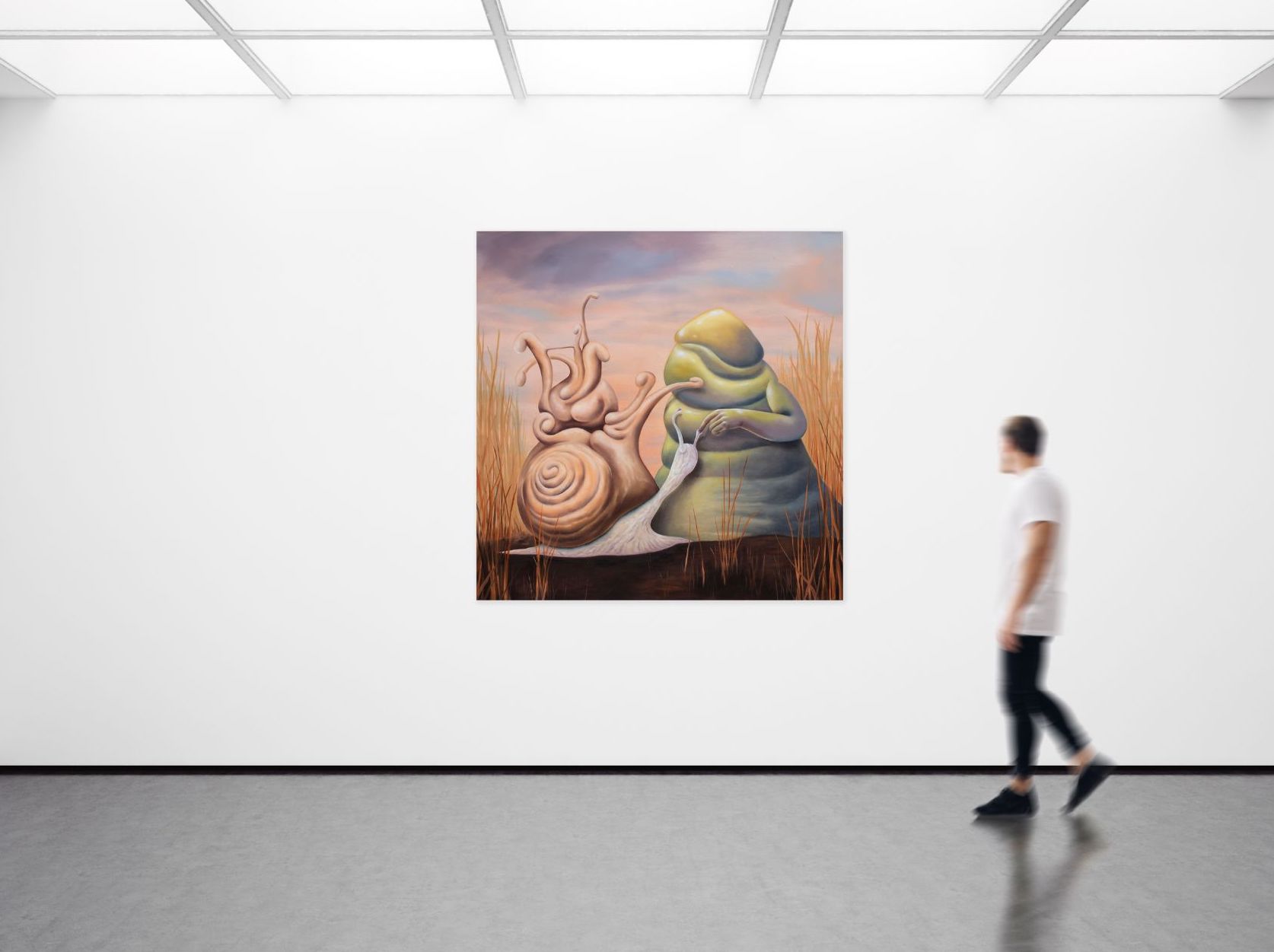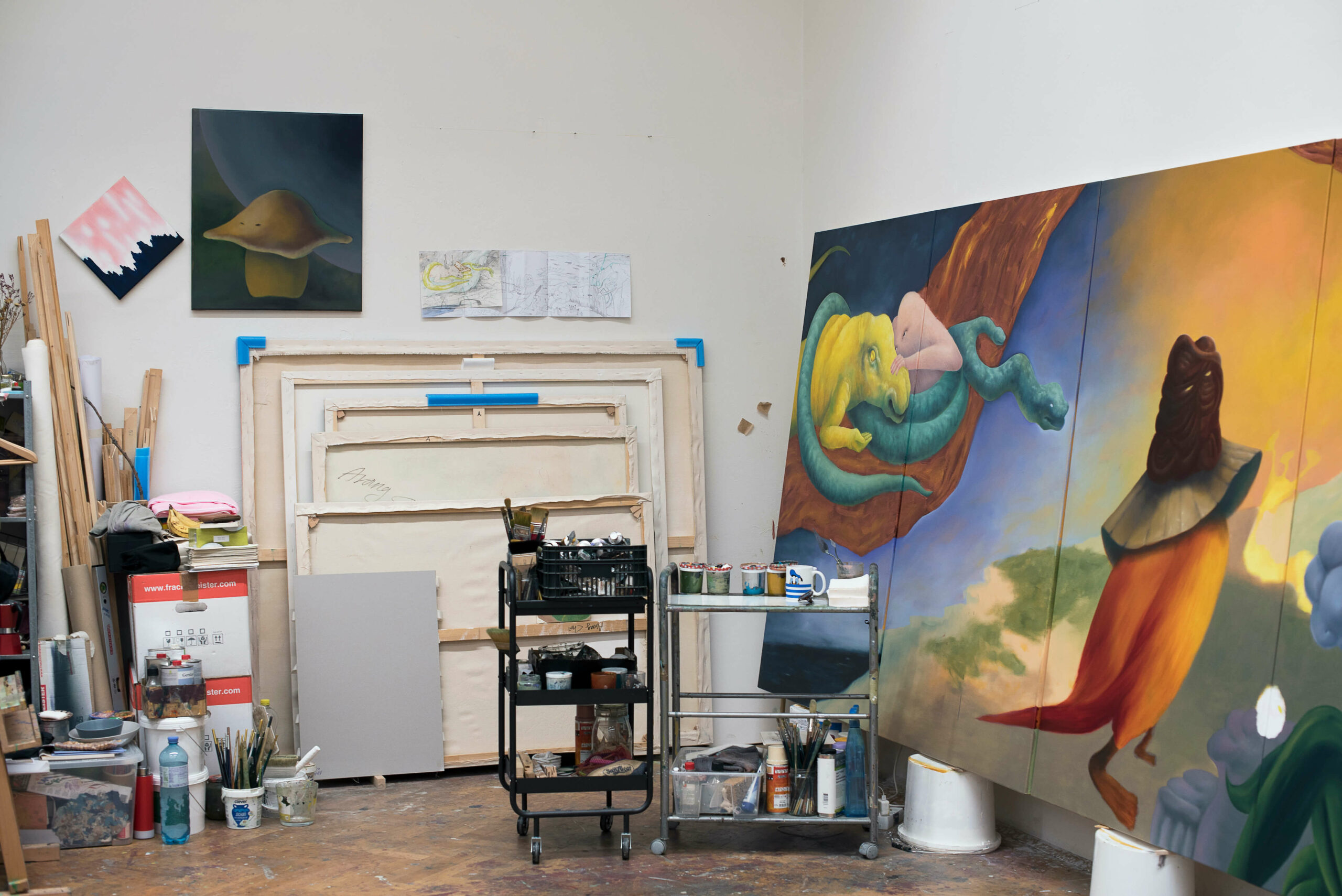September 13, 2023
Surrealism, secrets and souls: an interview with Arang Choi
Article by Mollie Barnes
4 min. read

“I create the world, and painting is the tool for it.”
Artist Arang Choi possesses a remarkable ability to bridge the gap between tangible and the intangible. She draws us to an intricate realm where mysteries, emotions and dreams converge.
Having recently graduated from the Academy of Fine Arts in Vienna, her career has been marked by incredible milestones, including her first solo exhibition, Three Moons, held at the Elektrohalle Rhomberg in Salzburg, this year, as well as her participation in various group exhibitions like The Blue, The Pink, The Immaterial, The Void at the Austrian Cultural Forum in London and Common Room at Galerie Hilger Next in Vienna.

Choi’s artistic journey so far is a testament to perseverance, marked by both challenges and immense triumphs. As with many early career artists, her recent graduation took place within the midst of the global pandemic, adding a layer to her narrative and resilience.
This resilience is demonstrated in the relentlessness of her process, describing how she tries to draw and sketch at all possible moments to get all the ideas out of her head. Choi’s creative process is an intricate dance between inspiration and execution. Her prolific sketches serve as the gateway to her imaginative universe, capturing fleeting ideas before they take form. She then flips through these works, and chooses one that fits both her canvas and mood before beginning painting. Choi paints in silence in her studio, so she can hear the sound of the brush on canvas. Silence is an essential companion, in her words “a kind of white noise for [her].” Her studio practice is a sacred ritual, involving moments of contemplation and sketches that serve as bridges to her canvas.

Many of her figures sit against a dark, mysterious background, inviting contemplation of what lies beneath the surface. She describes this space as possibilities. Works become visual puzzles, urging viewers to sit with the piece, to figure out what is lurking there.
Discussing inspirations, Choi referenced artists such as Henri Rousseau, Leonora Carrington, Nicole Eisenman and Marc Chagall, among many others. She describes how mostly all her inspiration comes from nature – mostly plants and animals as well as “their strange and extreme moments.” Her fascination with rare and peculiar flora and fauna serves as a testimony to her insatiable curiosity and thirst for the unconventional.
Surrealism, with its emphasis on the subconscious and the dreamlike, is a seemingly fitting vessel for Choi’s work. Though she employs the term “surrealism” to describe her practice, her introspective responses during the interview unveils another layer of her artistic philosophy. The merging of reality and the abstract within her works reflects a journey into the depths of the human psyche, and a desire to genuinely connect with her audience.
“My works are like my dream stage.”
Emotionally, all works invite viewers to explore their own feelings and interpretations, creating a diverse tapestry of emotional reactions. “All emotions play a role according to one’s own experience”, she states. Arang Choi’s commitment to allowing viewers the freedom to interpret her work through their unique perspectives underscores her respect for individuality. She describes her fascination with how “different we are and [how we] can interpret.”
Her approach to titling works is both intuitive and pragmatic, as she doesn’t enjoy titling a piece. She tells me how she doesn’t appreciate “[summing] up all the possibilities of fantasy in one sentence,” not wanting to impose limitations to understanding of her works, emphasising her commitment to connecting with her audience organically.

Arang Choi’s connection with her works is both personal and profound. They are externalisations of her inner worlds with each brushstroke encapsulating a fragment of her soul, breathing life into her art and transcending the boundaries between artist and artwork. Choi’s dream project would be to make an installation, one born from a vivid dream and desire to create a powerful experience, a tapestry of objects, colors, and sensations that leave an indelible mark on her creative consciousness.
